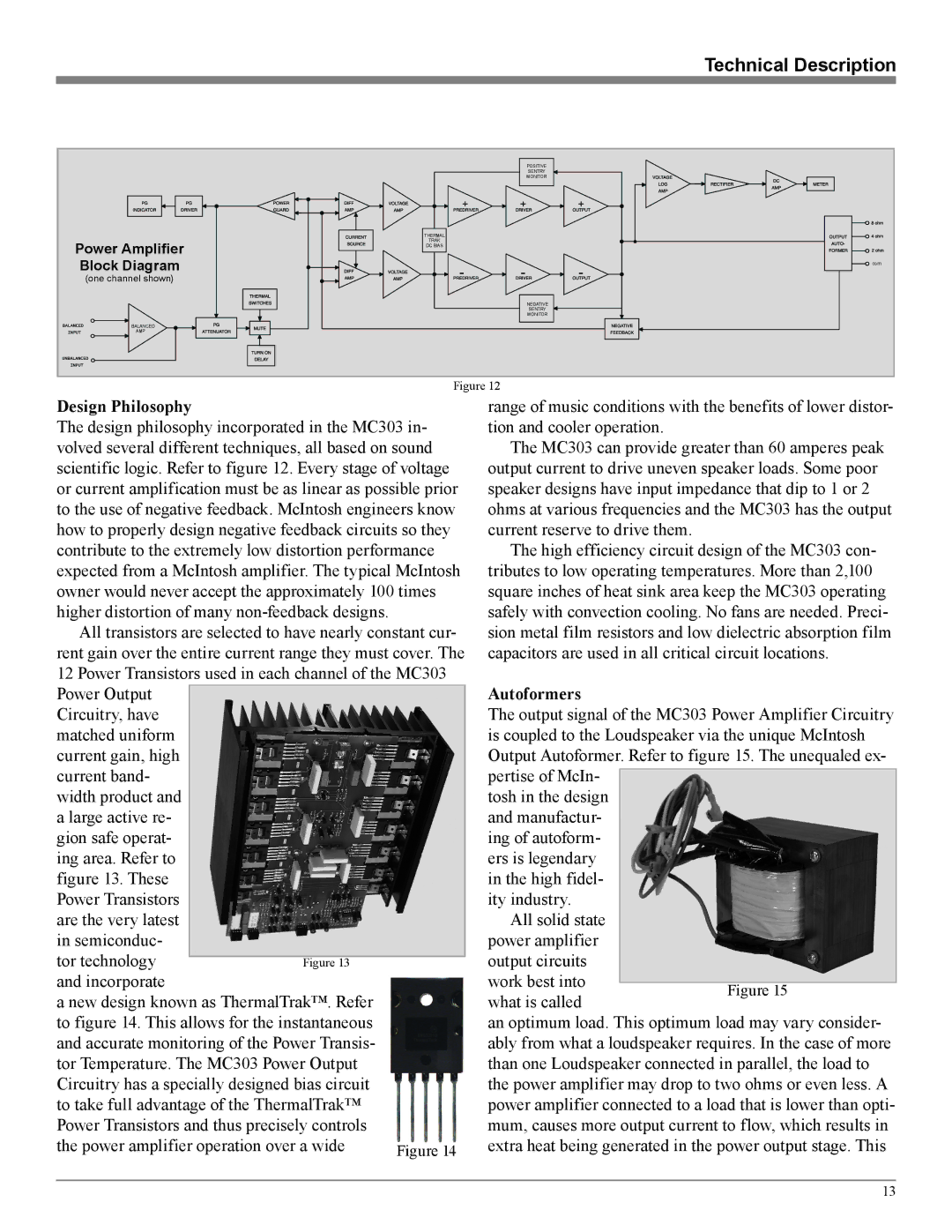
Technical Description
| POSITIVE |
| SENTRY |
| MONITOR |
| THERMAL |
Power Amplifier | TRAK |
DC BIAS | |
| |
Block Diagram | com |
| |
(one channel shown) |
|
| NEGATIVE |
| SENTRY |
| MONITOR |
BALANCED |
|
AMP |
|
Figure 12
Design Philosophy
The design philosophy incorporated in the MC303 in- volved several different techniques, all based on sound scientific logic. Refer to figure 12. Every stage of voltage or current amplification must be as linear as possible prior to the use of negative feedback. McIntosh engineers know how to properly design negative feedback circuits so they contribute to the extremely low distortion performance expected from a McIntosh amplifier. The typical McIntosh owner would never accept the approximately 100 times higher distortion of many
All transistors are selected to have nearly constant cur- rent gain over the entire current range they must cover. The 12 Power Transistors used in each channel of the MC303 Power Output
Circuitry, have matched uniform current gain, high current band- width product and
alarge active re- gion safe operat- ing area. Refer to figure 13. These Power Transistors are the very latest in semiconduc-
tor technology and incorporate
a new design known as ThermalTrak™. Refer to figure 14. This allows for the instantaneous and accurate monitoring of the Power Transis- tor Temperature. The MC303 Power Output Circuitry has a specially designed bias circuit to take full advantage of the ThermalTrak™ Power Transistors and thus precisely controls the power amplifier operation over a wide
range of music conditions with the benefits of lower distor- tion and cooler operation.
The MC303 can provide greater than 60 amperes peak output current to drive uneven speaker loads. Some poor speaker designs have input impedance that dip to 1 or 2 ohms at various frequencies and the MC303 has the output current reserve to drive them.
The high efficiency circuit design of the MC303 con- tributes to low operating temperatures. More than 2,100 square inches of heat sink area keep the MC303 operating safely with convection cooling. No fans are needed. Preci- sion metal film resistors and low dielectric absorption film capacitors are used in all critical circuit locations.
Autoformers
The output signal of the MC303 Power Amplifier Circuitry is coupled to the Loudspeaker via the unique McIntosh Output Autoformer. Refer to figure 15. The unequaled ex- pertise of McIn-
tosh in the design and manufactur- ing of autoform- ers is legendary in the high fidel- ity industry.
All solid state power amplifier output circuits work best into what is called
an optimum load. This optimum load may vary consider- ably from what a loudspeaker requires. In the case of more than one Loudspeaker connected in parallel, the load to the power amplifier may drop to two ohms or even less. A power amplifier connected to a load that is lower than opti- mum, causes more output current to flow, which results in extra heat being generated in the power output stage. This
13
